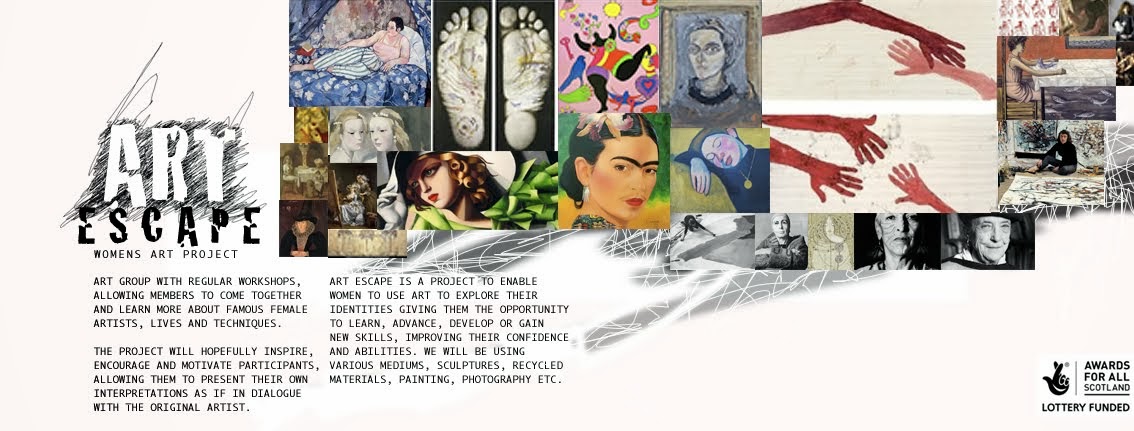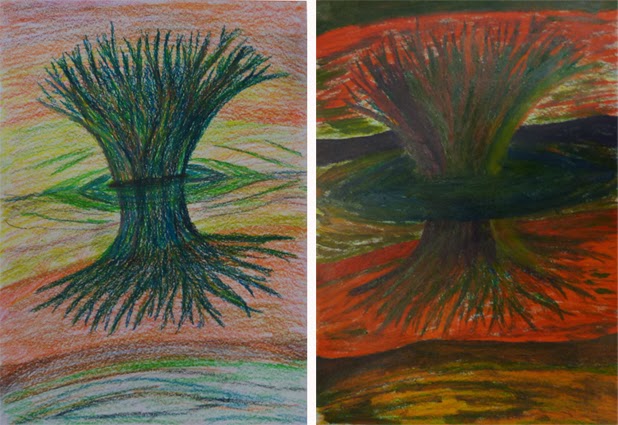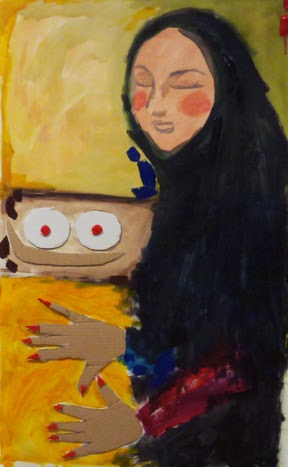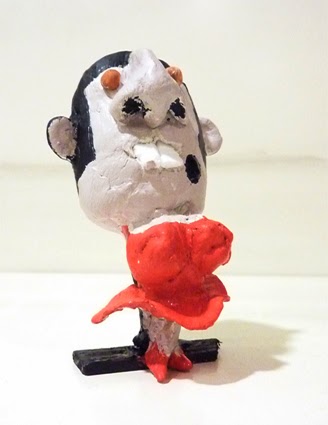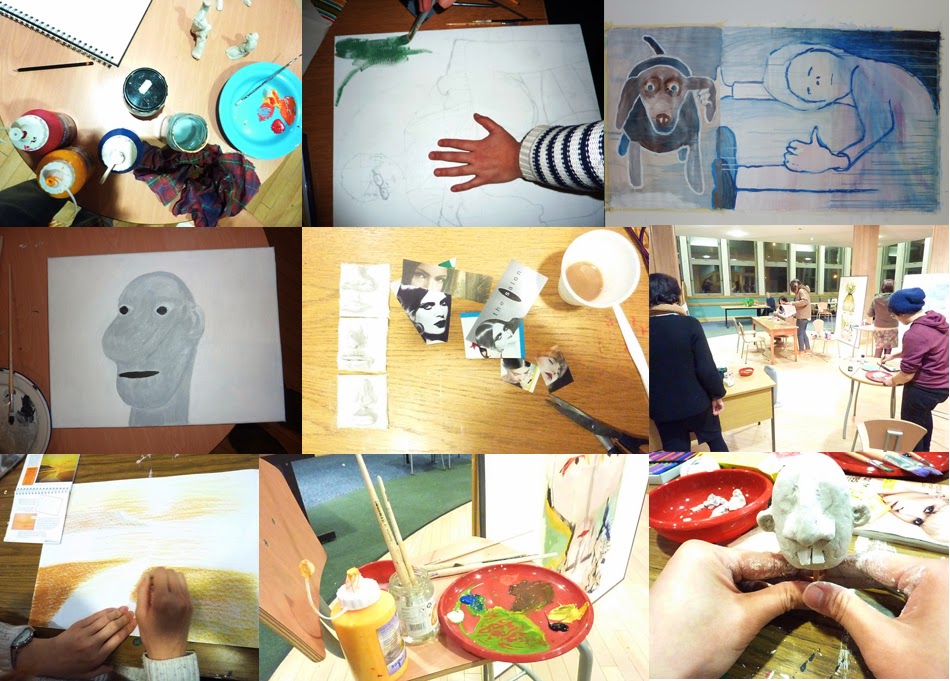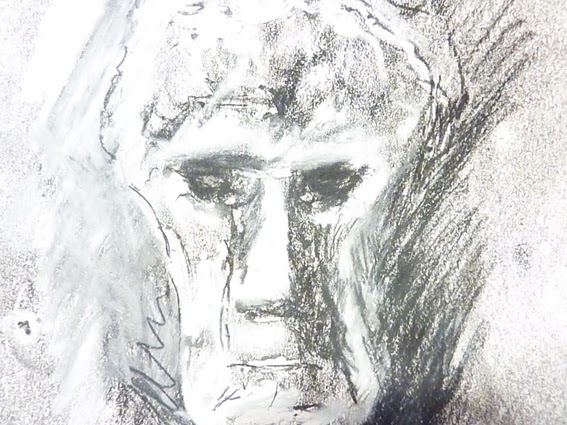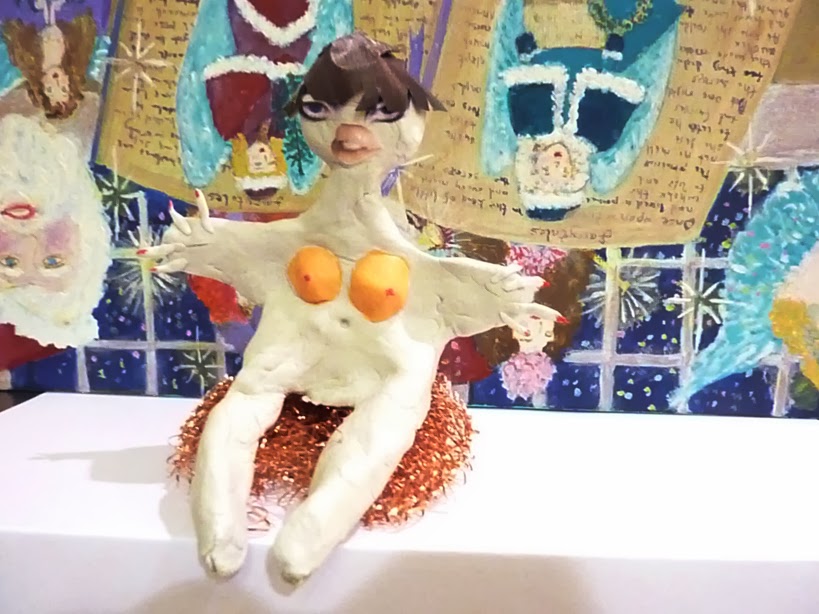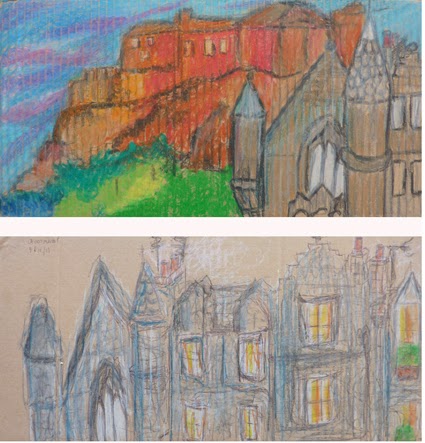Thursday 19 December 2013
Wednesday 18 December 2013
Saturday 14 December 2013
Thursday 12 December 2013
Friday 6 December 2013
Thursday 5 December 2013
Meret Oppenheim
Born in 1913 in Berlin - Charlottenburg, remembered mainly
for her Surrealist work and in particular her famous "Fur lined tea cup". ( object in fur )
produced in 1936 and still remains an icon of the Surrealist movement.
Meret studied
in Basle at the Kunstgewerbeschule and also in Paris at the Academie de
la Grande Chaumiere, participating in Surrealist exhibitions and exhibiting her
work at the young age of 20 years.
Much of her less well-known work involved not only drawings, paintings, objects, collages
and sculptures but also her writings and dream notations as well as her unusual
and fantastical jewellery. Following her success with her famous piece ( fur lined tea cup ) Meret
declined into a long period of depression and came out of this, stating......“
freedom is not given to you, you have to take it.“
Her free spirited, uninhibited ways combined with her youth
and beauty all contributed to the creation of an image of a beautiful
and creative woman whom all men desired. Meret spent much of her free time in Galleries and cafe’s in
Paris, where she met Giacometti, Hans Arp, and Max Ernst, Giacometti and Arp
becoming her first Artistic mentors and Ernst and Man Ray her intimate
companions.
Meret’s artistic method and creative periods depicted themes
such as metamorphoses between sexes, between human being and animal, nature and
civilization, and the search for identity, with her much appraised early work
and her less well known poetic work.
Her works erased borders between dream and reality, female
and male, man and animal, she gave objects, such as a pair of shoes a new life,
tantalizing our fantasy and unconscious. Her non conformist attitude and criticism towards alloted
gender roles made her a central figure for many generations of female artists.
In 1982 she was honoured with the Art Prize of the City of
Berlin, shortly before her death she became a member of the Berlin Academy of
the Arts. Meret Oppenheim died in Basel in 1985.
Thursday 28 November 2013
Thursday 21 November 2013
Monday 18 November 2013
Sunday 3 November 2013
Saturday 2 November 2013
I was inspired by Ida Applebroogs fascinating clay figures. I worked with the clay to form the figures, which were "lifeless". I photographed the figures and used photoshop to give them a personality. I wanted to keep the creations quite simple, but also give them a bit of character. I also wanted a simple background and chose the different wallpaper designs to express the character in the figures.
Ida Applebroog
Ida Applebroog, is a Jewish American Artist born 1929 in the Bronx, New York, who attended an Art Institute in Chicago receiving an honorary doctorate.
Some of her work is "cartoon like", her works include animation and sculpture with themes of gender identity and socio- sexual dysfunction.
Ida Applebroog a feminist activist, who's work was described by a male art tutor as being "as good as a man's".
Although she has been described as a "feminist" she refuses to be "labelled" and wishes only to be known as an Artist.
Ida Applebroog, is a Jewish American Artist born 1929 in the Bronx, New York, who attended an Art Institute in Chicago receiving an honorary doctorate.
Some of her work is "cartoon like", her works include animation and sculpture with themes of gender identity and socio- sexual dysfunction.
Ida Applebroog a feminist activist, who's work was described by a male art tutor as being "as good as a man's".
Although she has been described as a "feminist" she refuses to be "labelled" and wishes only to be known as an Artist.
Wednesday 23 October 2013
Tuesday 22 October 2013
Thursday 17 October 2013
Lois Dodd
1927, American painter.
Lois Dodd was educated at the Cooper Union in New York City
from 1945-1948 and the only woman founder of the Tanager Gallery, which was
integral to the Tenth Street-avantgarde scene of the 1950s where artists began
running their own coop galleries.
Lois Dodd is known primarily for her observational paintings
of landscapes, nudes and still lives. Her paintings through windows, some in
Maine and some in New York, include the striking 1968 piece that introduces the
show that is filled with squares and blocks incorporating the window frame into
its near geometrically abstract composition.
"I would find it, see it, and say 'that's exciting' but
I don't want to set things up" she stated in an interview.
Most, if
not all, of the outdoor scenes were done "plein air"...that is,
painted and largely completed outdoor...a challenge given the constantly
changing light and other natural conditions.
Wednesday 9 October 2013
Lygia
Clark
Her Mobius strip (Caminhando, 1964) couldn't exist in a gallery. It only exists when somebody touches it, when somebody cuts the strip into infinity creating an endless path. The artwork is the action, but there is still an object that is about to disappear completely. While she was teaching at Sorbonne, she realized that art could be therapy. In a society where body had been forgotten and ignored, recovering it could be a catharsis, a way to be aware of ourselves, of our body and what surround us. In Phenomenology of Perception (1945,) the philosopher Maurice Merleau-Ponty writes that when we touch something is not the object what we feel, but our own body in contact with this object. The new surface’s contact is the way to know that we do exist.
This is Lygia Clark’s goal: returning the body that we have forgotten. In her following works the object is less and less important: in Baba Antropofagica (1973) people pull from their mouths a spittle-drenched thread until it covers a person who lies on the floor. People vomit thread, or maybe they “vomit experiences”. We don’t need objects anymore, our body has become the tool for a catharsis that allows us to expel fears and traumas.
“Ritual without myths”, Lygia used to said. Art, at last, is life itself.
“If a lamp
can be considered an art work, why not our life itself? This Foucault's
sentence sums up Lygia Clark's work. Connecting art and life. She went through
a long way to get to this conclusion, a long way where every step was a crisis,
where every step was painful but needed. Her first paintings were connected to
Constructivism, regular shapes reminiscent of Cubism, that very soon started to
fight to get off the wall. Her Beasts (1962-64) did it: they fell from the wall and
they were able to move like little animals, but only when somebody touched
them. They didn't have right or left side, no front or back, little creatures waiting to be touched.
But some of these pieces were installed in a gallery surrounded by glass, in
cases: they were dead inside, like trapped corpses, and Lygia decided that it
would be the last time for her to exhibit in a gallery.
Her Mobius strip (Caminhando, 1964) couldn't exist in a gallery. It only exists when somebody touches it, when somebody cuts the strip into infinity creating an endless path. The artwork is the action, but there is still an object that is about to disappear completely. While she was teaching at Sorbonne, she realized that art could be therapy. In a society where body had been forgotten and ignored, recovering it could be a catharsis, a way to be aware of ourselves, of our body and what surround us. In Phenomenology of Perception (1945,) the philosopher Maurice Merleau-Ponty writes that when we touch something is not the object what we feel, but our own body in contact with this object. The new surface’s contact is the way to know that we do exist.
This is Lygia Clark’s goal: returning the body that we have forgotten. In her following works the object is less and less important: in Baba Antropofagica (1973) people pull from their mouths a spittle-drenched thread until it covers a person who lies on the floor. People vomit thread, or maybe they “vomit experiences”. We don’t need objects anymore, our body has become the tool for a catharsis that allows us to expel fears and traumas.
“Ritual without myths”, Lygia used to said. Art, at last, is life itself.
(Ana González Chouciño)
Monday 7 October 2013
Subscribe to:
Posts (Atom)
